50% Whole Wheat
A 50% Whole wheat, 50% high extraction with 87.5% hydration loaf inspired by the first recipe in Tartine #3 - White-Wheat Blend (Ode to Bourdon)
As usual I increased the amount of leaven to 30% and reduced the water and high extraction flour added to the final mix to compensate. The bread got some extra slap-and-folds when the salt is added. One loaf was baked after a 3 hour final fermentation at room temperature, whereas the other loaf was baked the following morning after 14 hour final fermentation in the fridge.
We don't really have white whole wheat available in the UK. The whole wheat flour I use is this one from Shipton Mill and is quite pink in colour. The high extraction wheat flour I use is this one from Bacheldre Watermill which is very pale, creamy and a little yellow.
Previously, I've either bolted the Shipton Mill whole-wheat or made a 50-50 mix of whole-wheat to white flour both of which are quite heavy compared to the Bacheldre high extraction flour. Making this switch has lightened the results from Tartine #3 recipes substantially.
10% Rye
A light country bread with a sprinkling of rye - 40% high extraction flour, 40% White flour, 10% whole wheat and 10% Rye and 85% hydration.
This dough seemed quite wet and sticky. Rather than add more flour, I upped the amount of slap-and-folding to about 10 minutes. The loaves got the 'Stegosaurus' score as the loaf fermented at room temperature seemed quite delicate and I didn't trust myself to score it with a fruit knife!!
A note on crumb shots and hydration
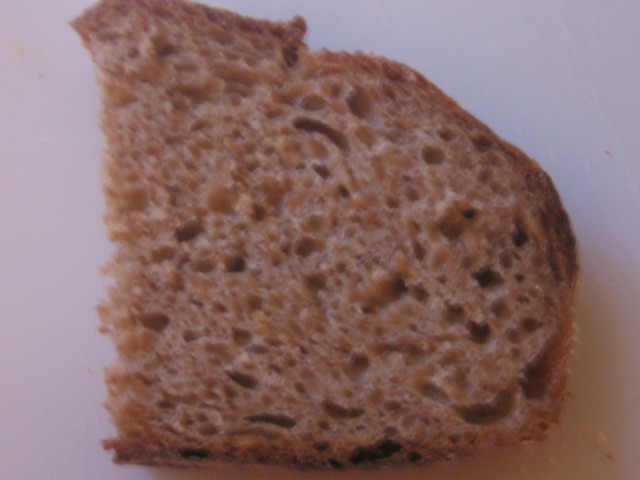 | 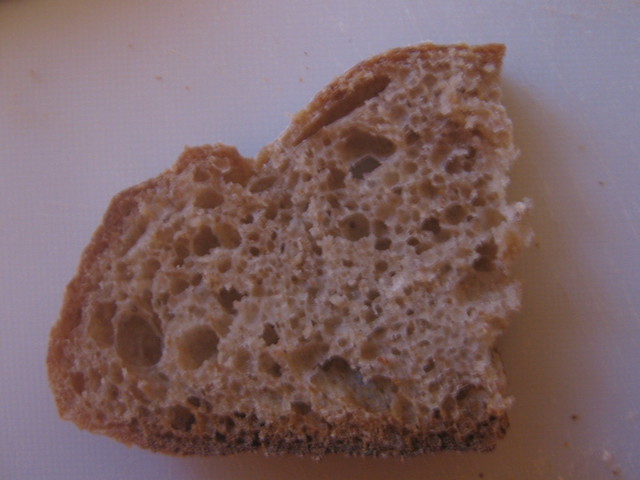 |
As you can see the crumb on my bread is nothing at all like the beautiful crumbs pictured in the book. There is I think two possible reasons for this:
1) Flour choice. I am using a relatively soft white wheat flour (this one from Shipton Mill), which is possibly not as strong as American flour and might not be the perfect choice for long fermentation.
2) Hydration. I increased the water in the 50% whole wheat bread until the texture was moderately loose but this is still not really 'high hydration' given the amount of bran and germ in the bread. In the case of the 10% Rye bread, I could have the opposite problem of too much water.
In both cases, I'm not really bothered by the lack-of-holes issue, for me the purpose of high(-er) hydration multi-grain breads is to have a soft, even, light crumb without having to enrich the dough. My comparison point being the wholegrain breads in Reinhart's book which were on occasion disappointingly rough.
Happy Baking!
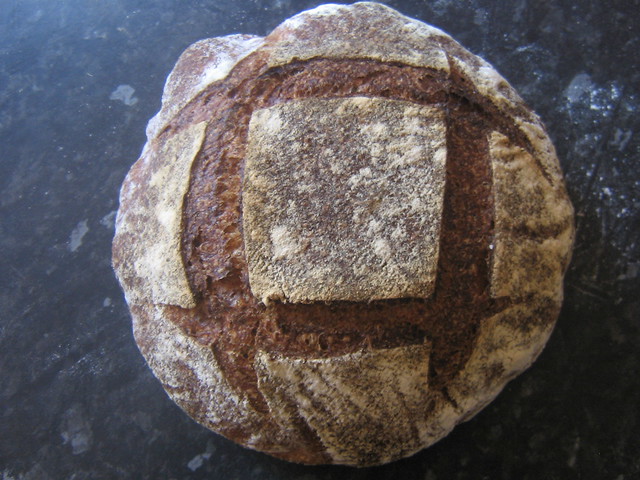
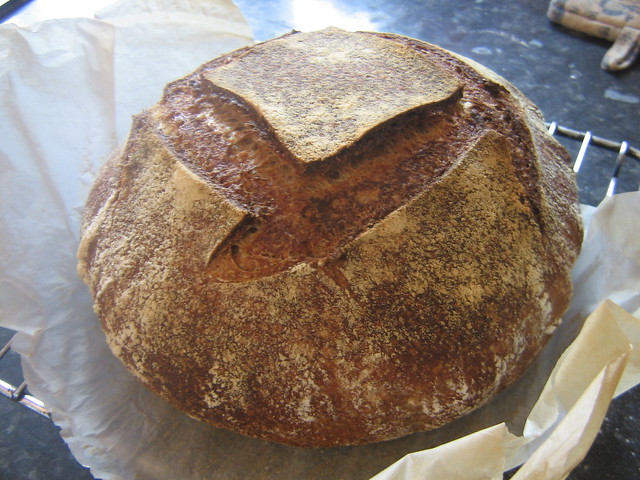
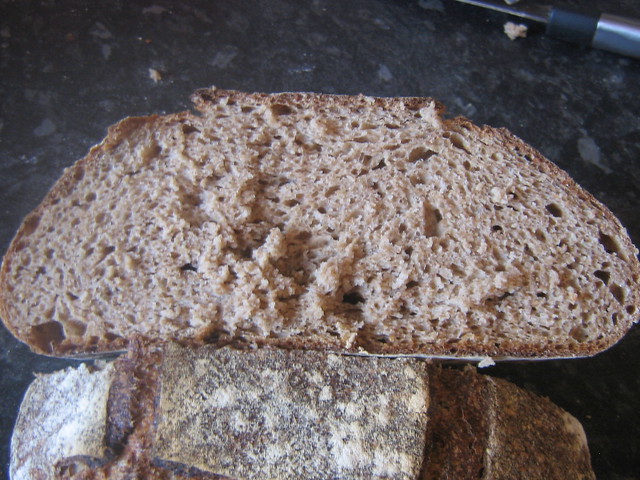
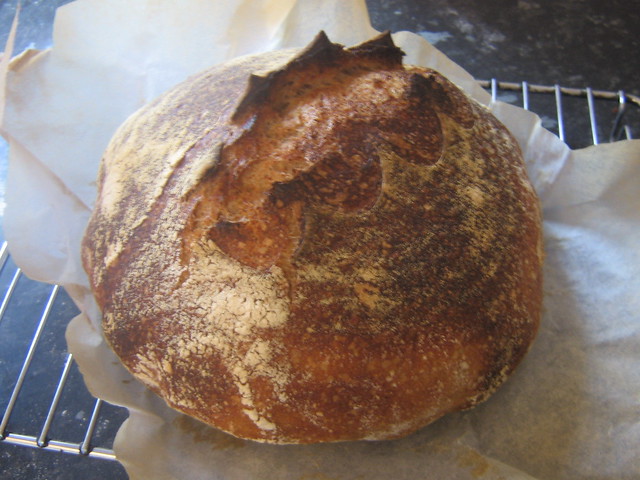
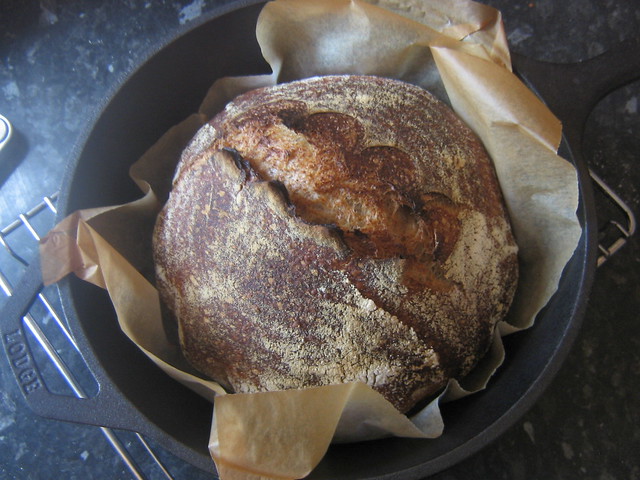
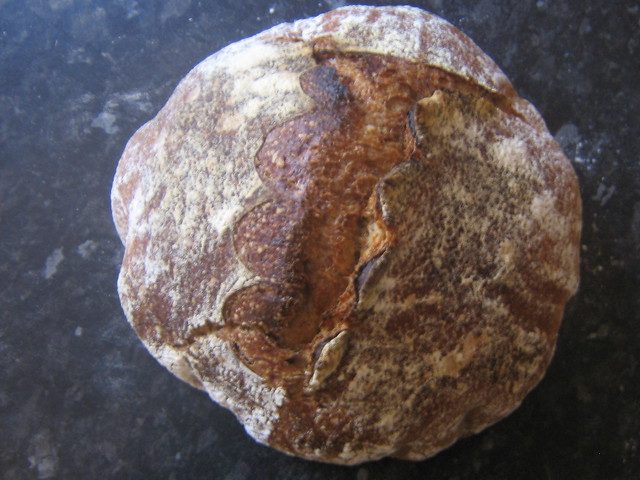
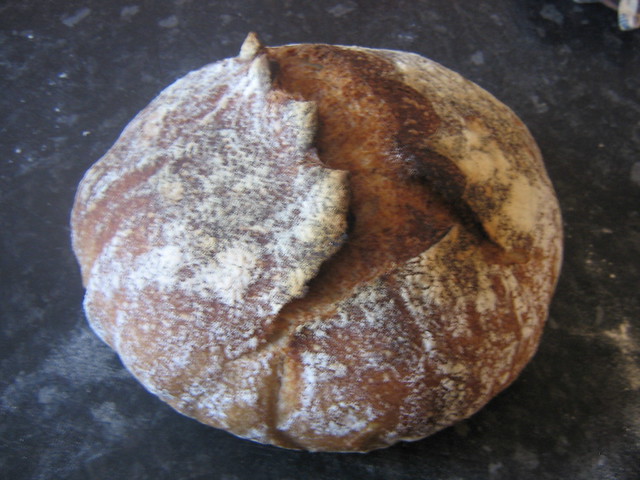
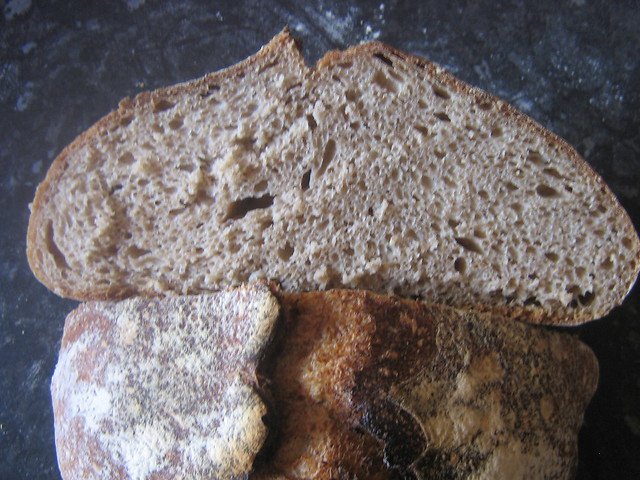
No comments:
Post a Comment